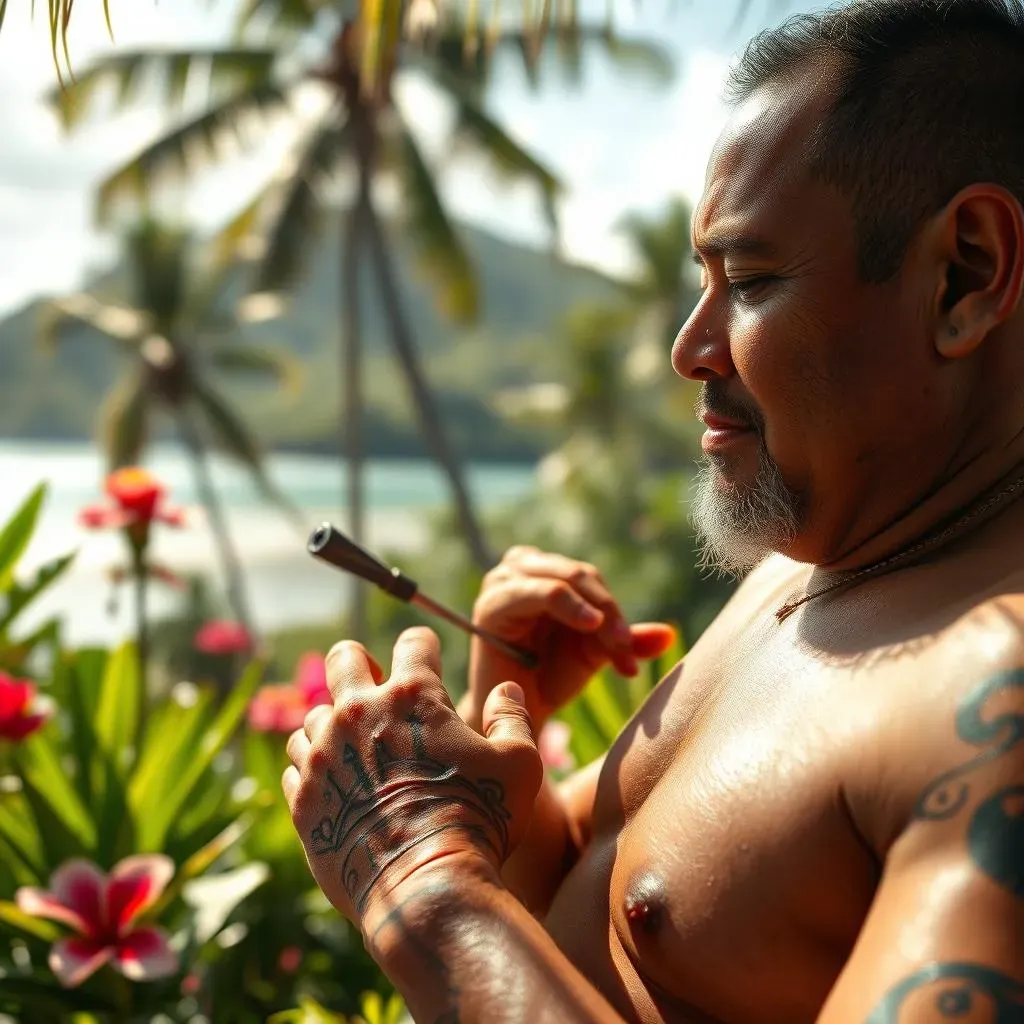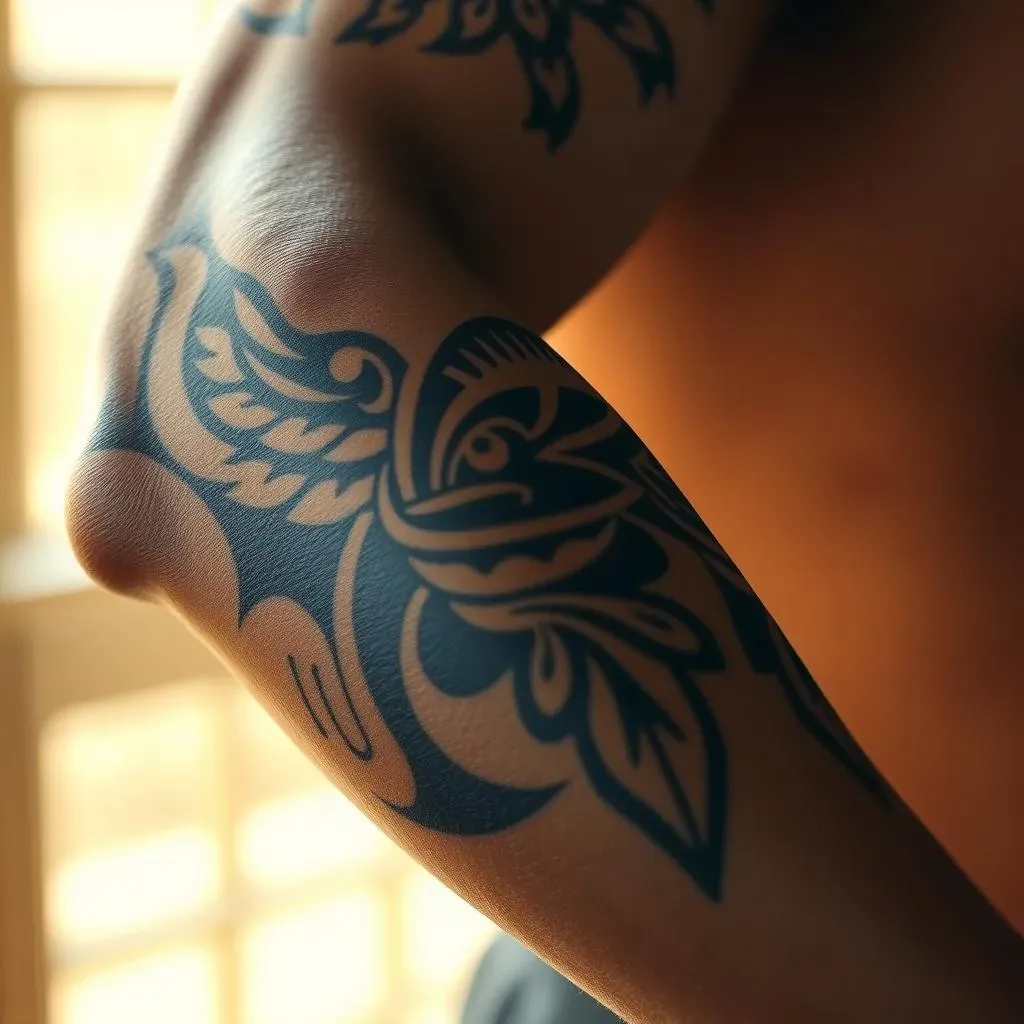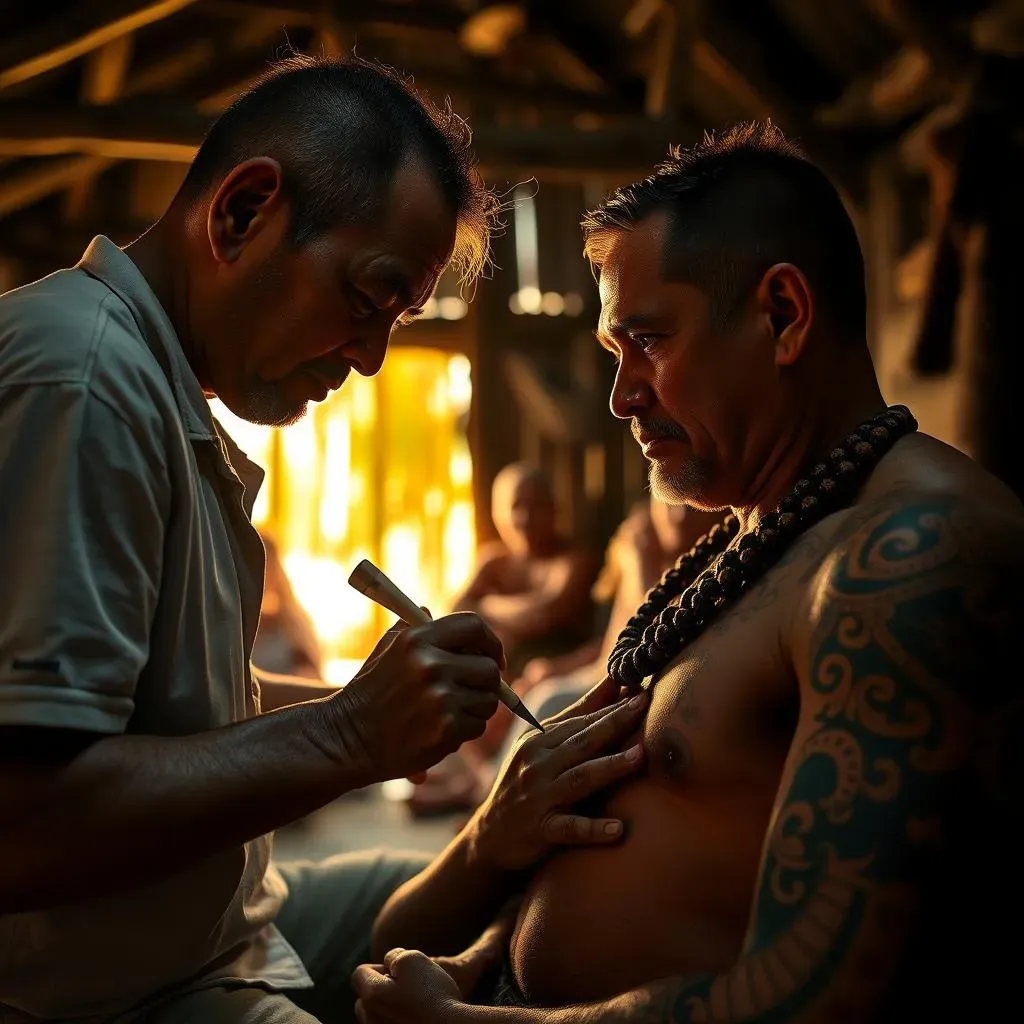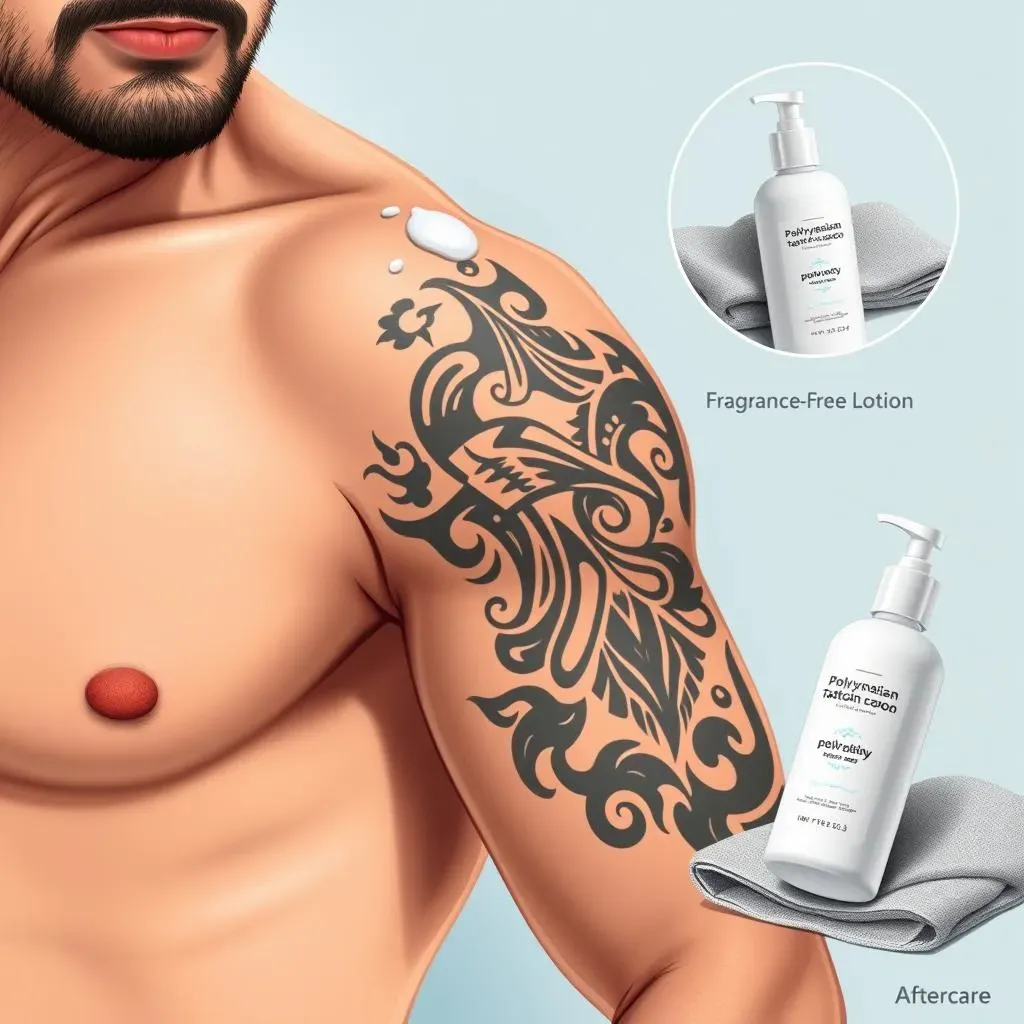Table of Contents
Thinking about getting a tattoo? Polynesian tribal tattoos for men are more than just ink; they're powerful symbols of heritage, strength, and personal identity. This article is your guide to understanding and appreciating this ancient art form. We'll journey through the rich history and cultural significance of these tattoos, exploring the meanings behind the intricate designs. You'll discover how to choose a design that truly resonates with you, reflecting your personality and values. We'll also look at the traditional techniques and the modern process of getting a Polynesian tribal tattoo, ensuring you're well-informed throughout your experience. Finally, we'll cover essential aftercare tips to keep your new tattoo looking its best for years to come. Whether you're a seasoned tattoo enthusiast or a curious newcomer, prepare to be captivated by the artistry and meaning behind Polynesian tribal tattoos for men. Let's dive in!
Polynesian Tribal Tattoos for Men: A Deep Dive into History and Meaning
Polynesian Tribal Tattoos for Men: A Deep Dive into History and Meaning
Ancient Traditions
Polynesian tribal tattoos for men weren't just decorative; they were deeply embedded in the culture, serving as powerful identifiers of lineage, status, and achievements. These weren't impulsive decisions; each tattoo held profound meaning, often passed down through generations. The designs themselves, intricate and symbolic, told stories of ancestry, bravery, and spiritual connection. For example, a tattoo depicting a shark might represent strength and protection, while a turtle could symbolize longevity and wisdom. Want to know more about the symbolism behind specific elements? Check out our guide on for a deeper understanding.
Symbol | Meaning |
|---|---|
Shark | Strength, protection |
Turtle | Longevity, wisdom |
Wave | Ocean, power of nature |
The Tattooing Process
The application of these tattoos wasn't a quick trip to a modern parlor; it was a sacred ritual, often lasting for days or even weeks. Traditional methods involved hand-tapped tools, creating a deeply painful but deeply meaningful experience. The process itself was a rite of passage, signifying a man's transition to adulthood and his place within his community. The pain endured was a testament to his resilience and commitment to his heritage. This dedication ensured the tattoo wasn't just skin-deep; it was a profound mark of identity. If you are interested in the different styles of tribal tattoos, you may want to explore our article on .
- Hand-tapped tools
- Painful, lengthy process
- Rite of passage
Modern Interpretations
While the traditional methods and cultural significance remain crucial, modern interpretations of Polynesian tribal tattoos for men allow for a personal touch. Many artists blend traditional designs with modern aesthetics, creating unique and personalized pieces. This allows men to connect with the rich history while expressing their individuality. Whether you choose a full sleeve or a smaller, more subtle design, the key is to understand the symbolism and choose a design that resonates with your personal story. Explore some cool and unique designs in our collection of . Remember, respect for the culture is paramount when choosing a Polynesian tribal tattoo.
Choosing the Right Polynesian Tribal Tattoo Design for Men
Choosing the Right Polynesian Tribal Tattoo Design for Men
Understanding Your Style
Before diving into specific designs, consider your personal style. Do you prefer bold, large-scale pieces or smaller, more subtle tattoos? Think about your overall aesthetic – are you drawn to geometric patterns, flowing lines, or a mix of both? Exploring different styles can help you narrow down your options. For inspiration, check out our gallery of to see what resonates with you.
- Large-scale vs. small tattoos
- Geometric vs. flowing lines
- Color vs. black and grey
Symbolism and Meaning
Polynesian tattoos are rich in symbolism. Each element—from sharks and turtles to waves and gods—carries a significant meaning. Researching different symbols and their cultural significance can help you choose a design that aligns with your values and beliefs. For instance, a shark symbolizes strength and protection, while a turtle represents longevity and wisdom. Want to delve deeper into specific symbols? Our guide on is a great resource.
Symbol | Meaning |
|---|---|
Sun | Life, power, warmth |
Moon | Mystery, intuition, cycles |
Stars | Guidance, dreams, aspirations |
Placement and Size
The placement of your tattoo can significantly impact its overall look and feel. Consider the size and shape of the design, and how it will look on your body. Popular areas for Polynesian tribal tattoos include the arms, legs, chest, and back. Think about your lifestyle and how the tattoo's placement might affect its visibility. For ideas on placement, browse our collection of . Remember, careful consideration of placement is key to ensuring your tattoo is both aesthetically pleasing and personally meaningful.
The Art of Polynesian Tribal Tattooing: Techniques and Traditions
The Art of Polynesian Tribal Tattooing: Techniques and Traditions
Traditional Tools and Techniques
Let's talk tools! Traditional Polynesian tattooing wasn't done with fancy electric machines. Instead, skilled artisans used hand-tapped tools, often made from bone, wood, or shell. These weren't your average needles; they were meticulously crafted instruments, each designed for specific purposes. The process was incredibly precise, requiring years of apprenticeship to master. The artist would carefully tap the tool into the skin, applying pigment with each strike. The result? Intricate, deeply saturated designs that were as much a testament to the artist's skill as to the wearer's commitment. Want to see some amazing examples of this artistry? Check out our gallery of .
Imagine the dedication! A single tattoo could take days, weeks, or even months to complete. The process itself was a significant event, often a communal affair involving family and friends. It was a rite of passage, a powerful symbol of transformation and belonging within the tribe. The pain was intense, but it was endured with stoicism, a reflection of the warrior spirit and the deep cultural significance of the tattoo. For a look at some less intense options, check out our post on .
Tool | Material | Purpose |
|---|---|---|
Uhi | Sharp bone or wood | Creating lines and shapes |
Au | Sharpened boar tusks | Applying pigment |
Modern Practices and Adaptations
While traditional methods hold immense cultural significance, modern Polynesian tattooing utilizes electric machines for a more efficient and less painful process. However, the spirit of the tradition remains. Skilled artists strive to maintain the integrity of the designs and their cultural meaning. They often incorporate traditional motifs and techniques while adapting to modern aesthetics. This blend of tradition and innovation allows for a wider range of styles and personalized designs. If you're interested in the blend of old and new, check out our collection of .
The modern approach also emphasizes hygiene and safety. Sterile environments and modern equipment ensure a safe and comfortable tattooing experience. While the pain is significantly reduced, the respect for the cultural significance remains at the forefront. Choosing a reputable and experienced artist who understands and respects the cultural heritage is paramount. A good artist will guide you through the process, ensuring you're fully informed and comfortable with your choice. For more design inspiration, take a look at our article on .
- Electric machines for efficiency
- Emphasis on hygiene and safety
- Respect for cultural heritage
Polynesian Tribal Tattoos for Men: Aftercare and Maintenance
Polynesian Tribal Tattoos for Men: Aftercare and Maintenance
Initial Healing
So, you've got your awesome Polynesian tribal tattoo! Congrats! Now, the crucial part: aftercare. Think of this as the tattoo's honeymoon period – treat it right, and it'll reward you with a stunning, long-lasting piece of art. The first few days are all about keeping it clean and protected. Your artist will give you specific instructions, but generally, this means gentle washing with antibacterial soap and patting it dry (no rubbing!). Avoid tight clothing that might irritate the area, and definitely steer clear of swimming pools, hot tubs, and anything that could introduce bacteria. Keep it moisturized with a fragrance-free lotion recommended by your artist. This will help prevent scabbing and keep the ink vibrant. For more detailed advice, check out our guide on .
Remember, patience is key! The healing process takes time, and it's not always pretty. You might experience some scabbing, itching, or slight discoloration. Resist the urge to pick or scratch – this can damage the tattoo and lead to scarring. If you're concerned about anything, always contact your artist or a healthcare professional. They'll be able to offer advice and address any concerns. For more tips on maintaining your tattoo's vibrancy, see our article on . It's all about long-term care!
- Gentle washing
- Avoid tight clothing
- Keep it moisturized
Long-Term Care
Once your tattoo has fully healed (usually several weeks), the aftercare shifts to long-term maintenance. This is where sun protection becomes your best friend. UV rays are the enemy of vibrant ink, causing fading and discoloration over time. Always apply a high SPF sunscreen to your tattoo before sun exposure, even on cloudy days. Think of it as an extra layer of protection for your precious artwork. Regular moisturizing is also important to keep the skin supple and the ink looking its best. This will keep your tattoo looking fresh for years to come. For a detailed look at sun protection, see our article on .
Beyond sun protection and moisturizing, consider your lifestyle choices. Things like smoking and excessive alcohol consumption can impact skin health and potentially affect the appearance of your tattoo. A healthy lifestyle—including a balanced diet and regular exercise—will contribute to better skin health, leading to a more vibrant and long-lasting tattoo. Remember, your tattoo is a reflection of you, so treat it with the respect it deserves. For more insights into maintaining a healthy lifestyle, read our post on .
Action | Benefit |
|---|---|
Use high SPF sunscreen | Prevents fading and discoloration |
Regular moisturizing | Keeps skin supple and ink vibrant |
Addressing Concerns
Even with the best aftercare, sometimes issues can arise. If you notice any signs of infection (increased redness, swelling, pus), seek medical attention immediately. Don't delay; prompt treatment is crucial to prevent complications. Similarly, if you experience excessive itching or peeling that doesn't seem normal, consult your artist or a healthcare professional. They can help determine if there's a problem and recommend appropriate solutions. For help with common tattoo issues, check out our article on .
Remember, a well-cared-for Polynesian tribal tattoo will be a source of pride and admiration for years to come. By following the aftercare instructions diligently and practicing good skin hygiene, you can ensure your tattoo remains a beautiful and meaningful part of your life. Your commitment to aftercare is just as important as the choice of design itself. It represents your respect for the art and its cultural significance. For more information on maintaining your tattoo, see our article on .